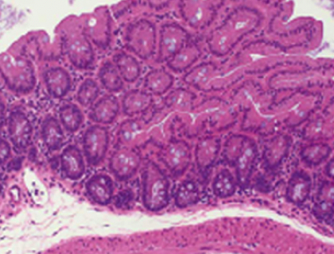Bacterial Cell-Cell Communication
Cell-to-cell communication by single-cell organisms is utilized to coordinate their behavior and function such that adaptation to changing environments and competition with multicellular organisms becomes possible. Amongst bacteria, this process has been termed "quorum sensing" and behaviors controlled by this process include biofilm formation, virulence-factor expression, antibiotic production, and bioluminescence. Regulation of quorum sensing is performed by autoinducers that are categorized into three distinct classes: 1) acyl homoserine lactones (AHLs) used by Gram-negative bacteria, 2) autoinducing peptides (AIPs) that are generally employed by Gram-positive bacteria, 3) a compound known as AI-2 and is used by both Gram-positive and Gram-negative species.
Our current studies into quorum sensing encompasses research into all three classes of autoinducers, with our initial focus on acyl homoserine lactones and the recently described autoinducer AI-2. Projects currently underway involve a synergy of molecular biology, microbiology, immunology, biochemistry and organic chemistry. Below, two representative examples of our research efforts are given in the form of the detection of a novel biologically active degradation product of 3-oxo-N-acyl homoserine lactones, and the first reported synthesis of the AI-2 precursor, DPD, and validation of the critical role of boron chelation in the biological activity of this compound.
We have recently uncovered the presence of a new nonenzymatically-formed product from N-(3-oxododecanoyl)-L-homoserine lactone, and discovered that is has significant biological activity; both the N-acylhomoserine and its novel tetramic acid degradation product, 3-(1-hydroxydecylidene)-5-(2-hydroxyethyl)pyrrolidine-2,4-dione, are potent antibacterial agents. Bactericidal activity was observed against all tested Gram-positive bacterial strains, while no toxicity was seen against Gram-negative bacteria. We propose that P. aeruginosa utilizes this tetramic acid as an interference strategy to preclude encroachment by competing bacteria. Additionally, we have discovered that this tetramic acid binds iron with comparable affinity to known bacterial siderophores, possibly providing an unrecognized mechanism for iron solubilization. Our findings merit new attention that other previously identified autoinducers be reevaluated for additional biological functions.
AI-2 has been detected in a wide variety of bacteria, and the structure was recently solved in complex with the V. harveyi sensor protein LuxP. Although the generation of AI-2 has been proposed to proceed through the conversion of the ribose moiety of S-ribosylhomocysteine into (4S)-4,5-dihydroxy-2,3-pentanedione (DPD), the mechanism of AI-2 formation remains unclear as direct detection of DPD has not been reported. Consequently, we became interested in the synthetic preparation of DPD as a method to address a number of questions related to the biosynthesis of AI-2.
Despite the relatively simplistic five-carbon backbone of DPD, the total synthesis of this compound had been elusive until our efforts. DPD is a highly functionalized molecule with two hydroxy and two keto moieties, thereby imparting a large propensity for dimerization or reaction with various biological nucleophiles. Indeed, many previous attempts to synthesize DPD were thwarted by this inherent reactivity. Upon completion of our synthesis, we next examined the biological activity of synthetic DPD in a bioluminescence assay using two mutant V. harveyi bacterial strains. Gratifyingly, relative to a known standard, 4-hydroxy-5-methyl-3-(2H)-furanone, synthetic DPD possessed roughly 500-fold greater activity. Addition of boric acid to synthetic DPD further increased bioluminescence, clearly indicating a significant role of boron in AI-2 activity. In total, our results substantiate the argument that DPD is the true precursor to AI-2 and furthermore, validate the hypothesis that boron chelation is required for full induction of bioluminescence.

